
By Boverianda Chinnappa and Nanjamma*
Dr Pattada Indira (in picture), a renowned botanist and a Fulbright Scholar, who passed away recently, had not only done extensive research in her chosen area of botany, but had taken keen interest in documenting the religious and social aspects of the Kodava (Coorg) community living in the Kodagu (Coorg) district of Karnataka.
Indira retired in 1999 as a Professor and Reader in Botany at the Centre for Advanced Studies in Mycology, Univ. of Madras. She passed away in Mysore at the age of 82, on the 4th of April 2021.
Besides being a renowned scientist, she had a passion for Kodagu, the Kodava way of life and language. Gentle, friendly, self-confident and unassuming by nature, she wore her learning lightly and never spoke of her achievements.
Indira’s father, Pattada C. Uthayya, was well-known as a teacher and head-master in Virajpet, who later went on to become the District Education Officer. After completing her schooling in the Govt. High School in Virajpet, Indira went to Madras for her higher studies where she was a rank-holding student in her B.Sc (Hons) and M.Sc in Botany. She got her PhD in Botany (Mycology) from Madras University in 1966.
Indira lectured at graduate and post-graduate levels at Madras University for many years, and guided many PhD students. Her contributions to research in Myxomycetes, Foodgrain Storage Fungi & Mycotoxins, Medical Mycology and Ethno-botany are impressive.
She authored nearly 70 technical papers that were published in reputed Indian and international journals; and attended and presented papers at numerous conferences in India and abroad.
She was a Post-doctoral Fellow (1966-1968) and Research Associate (1968-71) at the Indian Institute of Science, Bangalore. She was a Fulbright Visiting Scholar at the Fairmont State University, USA (1990-91). She was the President of the Mycological Society of India in 2000.
She has to her credit seven research projects of periods varying from a year and a half to four years, with funding from the University Grants Commission (UGC), Council of Scientific & Industrial Research (CSIR), Department of Environment & Forests (DEF), Dept. of Science & Technology (DST) and the World Wildlife Fund for nature (WWF).
She instituted the Dr. Kalyanasundaram Memorial Award for the best Ph.D thesis in Botany from Madras University to honour her late husband, who too was a Prof. of Botany at that University.
For the WWF research project that she conducted in Kodagu (1993-1996), she prepared a video-film of one hour duration on Ethnobotany of Kodagu, and Database on Medicinal Plants of Kodagu and handed it over to the WWF.
Among her technical papers, one that would be of interest to Kodavas is “An ethnobotanical study of the Kodavas and other tribes of Kodagu District, Karnataka’ published in 1995 in the Bulletin of the Botanical Survey of India Vol 37.
Of particular interest is her Introduction which includes her comments on the Ethnology of the Kodavas and the Cultural Influences that they experienced over the years.
Her latest ‘works in progress’ were a book on Botany, and a short translation of the Ramayana in the Kodava language. The latter is being published by the Karnataka Kodava Sahitya Academy. She wrote very well in the Kodava language, and contributed many articles and letters to the editor to Kodava language weeklies.
Quotes from Indira’s paper: “An ethnobotanical study of the Kodavas and other tribes of Kodagu District, Karnataka’ (Bulletin of the Botanical Survey of India Vol 37. 1995).
Given below are the notes from Indira’s papers.
The Kodavas are the original inhabitants of Kodagu at present a district of Karnataka State – located in the Western Ghats. Although Kodavas cannot be classified as tribals under the present conditions, they form a minor ethnic group that has apparently been living amidst the forests of this region over the last few thousand years. Their knowledge of the local plants is extensive, and some of it is recorded here, with a listing of 240 species.
…… the region had been covered with dense forests, the valleys alone having been cleared for dwelling and rice cultivation, by the people of the land, the Kodavas, who practiced settled rather than shifting cultivation from the beginning. Rice had long been the staple food and the only crop cultivated by the people of this land, who had depended on the forests for the rest of their requirements including meat, being good hunters.
There were certain rules for the utilization of forest produce, however, by an unwritten law of the Kodavas. One large forest area in every village, usually adjacent to the temple of the village deity, was reserved as God’s forest, from which no man was permitted to take anything, and it was left undisturbed. With the advent of coffee cultivation, and sale of timber as a means of living, the forest cover has been greatly reduced in Kodagu.
ETHNOLOGY
The Kodavas are regarded as the original inhabitants of this place. Anthropologically however, both with regard to physiognomy, dress and social customs, they resemble some of the North Indian ethnic groups and are said to belong to an Aryan stock, although their origins and time of migration are obscure. They call themselves Kshatriyas, and indeed their social customs are a quaint blend of tribal and Vedic Kshatriyan characters. Their good looks and martial bearing have been commented upon by several British authors. The men are able warriors, and even now many of them hold high ranks in the Indian army. The level of literacy is quite high among both men and women, but the women generally prefer to stay at and look after the home, rather than pursue a career. The position of women is quite good, there is no dowry system, and the re-marriage of widows, as well as of women separated from their husbands, is common.
Although the Kodavas have now become a part of the mainstream of Hindu society and believe in the Gods of the Hindu pantheon, their religion in its original form has none of the trappings of present day Hinduism.
In village temples one may find the worship of various local deities coupled with a kind of Shamanism, but this is definitely a Keralite influence. In their original state, the Kodavas emerge as tribals, being worshippers of the Ancestor Spirit and of Nature. Even their deep reverence for the river Cauvery, whom they regard as their mother, comes from their nature-worshipping instinct. Their religious practices involve very little ritual, as a Dharmic or righteous way of life is more important to them than the observance of rituals.
In the disciplined hierarchical system of Kodava Society, a few Okkas – which are a close-knit, exogamous joint family unit – within the radius of 5-10 kilometers form an Ooru, and a few Oorus together form a Nadu. There is a headman at every level. There is good co-operation among the units that form these associations, and a general interest in the well-being of its members.
The language of the Kodavas is a Dravidian dialect and although it superficially appears like a mixture of Tamil, Malayalam and Kannada, phonetically it has some distinctive features of its own. Since it lacks a script, the Kodavas have preserved their culture mainly through a distinctive oral tradition.
They have special songs to be sung during weddings, during the harvest festival and at funerals. These are sung by a group of men, usually four in number, to the beat of drums carried by them. On this count it may be taken that the Kodavas were illiterate until some 250 or 300 years ago, when the reading and writing of Kannada was initiated following the conquest of Kodagu by some Lingayat chieftains who ruled Kodagu from the mid-seventeenth to the mid-nineteenth century, when it was annexed by the British.
OTHER TRIBES
There are several other communities inhabiting this land. These include the Ammakodavas who call themselves brahmins but are not recognised as such by the Kodavas. The Kodavas have imported Brahmins from the West Coast – South Canara and Kerala to conduct the rites in their temples. There are several scheduled tribes such as Poleya, Yerava, Kuruba etc. Of these, some groups of Poleyas are apparently indigenous, and they speak the Kodava language. The Yeravas are immigrants from Kerala and the Kurubas, from Mysore; and they speak dialects of Malayalam and Kannada respectively. The Yeravas and Kurubas are more negroid than are the Poleyas.
CULTURAL INFLUENCES
The single strong influence over the culture of Kodavas is that of Kerala. It appears that, being a Kshatriya tribe given to war but cultivating land during peace time, their skills were limited to warfare and agriculture. Therefore they must have had to depend on outsiders for other requirements; this they seem to have obtained largely from Malabar, with which they had established some trade through a barter system. The traditional houses and temples of the Kodavas as seen now, are of Keralite architecture. Even their temple rituals follow those of Kerala. Therefore, it is difficult to say how much of their knowledge of plants is indigenous, and how much has been acquired through their association with Kerala, especially in the realm of folk medicine. All the same this knowledge is worth recording.
*Boverianda Chinnappa and Nanjamma are researchers and writers

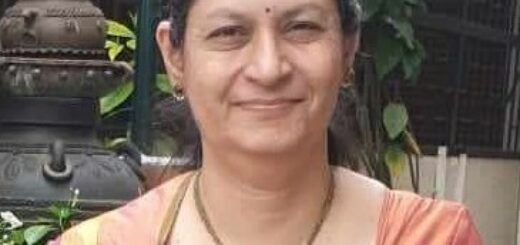
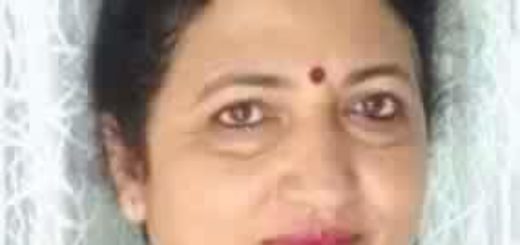
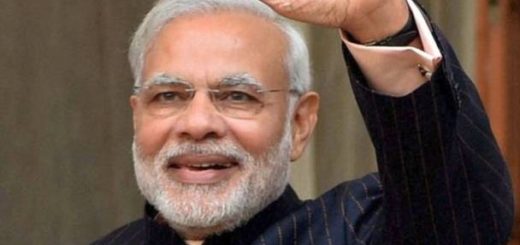


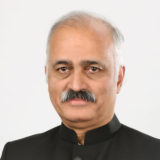
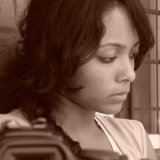
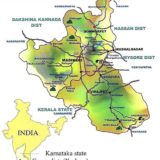
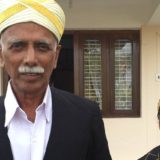
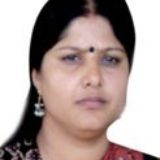
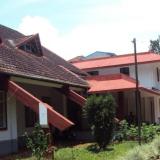
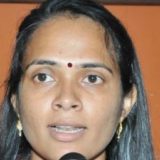
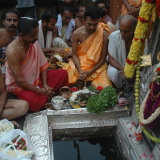

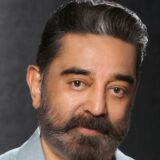
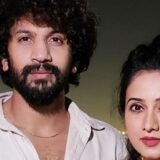
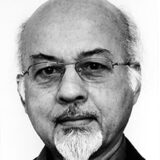
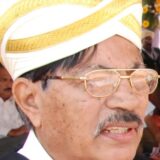
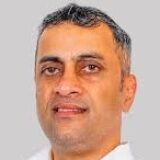

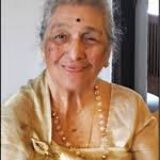

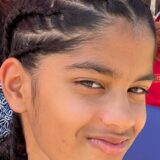

Trust her last moments were without any pain and may her soul Rest in Eternal Peace.
Meanwhile, I am keen to read an informative and educative profile on Dr. Achaiah, the famed food scientist whose expertise in oils was highly respected around the world….
Dr. Indira Kalyanasundaram was a very soft spoken, readily helping human being. In her college, she was a student of Prof BGL Swamy; she was a world authority on Actinomyces and was regularly invited to International symposia on this subject.
Proud to be associated with her on WWF Project on the Ethnobotany of Kodavas. We miss her.
I was very close friend of your dear husband when doing our PhD in UBL. In fact he guided me in the initial days and taught how to prepare PDA slants and Petri plate antibiotic assays. He was a scholar of repute. After his untimely death, you have braved all the while to become an equally great scientist. This is a posthumous letter intended for her grieving family and I hope God will guide them to bear the loss
I was mentored in my PhD program by Dr R Kalyanasundaram, Dr Indira’s husband.
I was mentored by Prof Indira Kalyanasundaram,on the intricacies and biology of myxomycetes.A great scientist,humble,pleasant,soft spoken and upright.